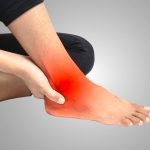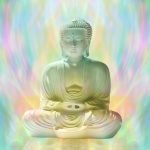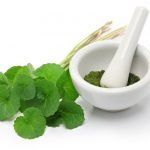An Herb For Our Yin-Deficient World
Robin DiPasquale, ND, RH (AHG)
Rehmannia glutinosa
Botanical Insights
The world is moving fast. Many people have daily lives that demand too much in too little time. Technology and social media have people plugged in day and night. Speed limits on highways are faster, bullet trains speed from city to city in countries across the world, and people rush from one place to another day after day. All of this can burn the yin, deplete the kidney qi, and not only leave one depleted, but also leave one susceptible to deeper immune-based diseases that result from such a depleted state.
If you don’t already know the Scrophulariaceae family plant, Rehmannia glutinosa, commonly known as Chinese foxglove root, perhaps this introduction will open your awareness to an herb with a focus on replenishing kidney deficiency, especially kidney yin. When we speak of kidney deficiency in Chinese medicine, the broader interpretation includes adrenal deficiency, which can influence the immune system and the expression of both allergic and autoimmune pathologies.
Rehmannia and Yin Deficiency
Knowledge and understanding about rehmannia comes from the Traditional Chinese Medicine (TCM) materia medica, which includes two preparations: raw rehmannia, called Sheng Di Huang, and prepared rehmannia, called Shu Di Huang. Both raw and prepared rehmannia nourish yin and blood; however, the raw sheng di huang is used more to dissipate heat, allowing the body to generate more fluids, while the prepared shu di huang is used more to nourish the body when deficiencies of yin qualities of cool and moist result in too much heat or dryness in the system.
Raw rehmannia, sheng di huang, is energetically cold, sweet, and bitter. It works in the heart, kidney, and liver channels. Raw rehmannia nourishes the yin and the blood and generates fluids, countering the dry expression of yin deficiency. Dry symptoms indicating yin deficiency are seen in menopause with dry hair, skin and dry vagina, as well as in autoimmune conditions like Sjogrens syndrome with dry mouth, dry eyes, and the sicca complex. Raw rehmannia, with its bitter energy, is antipyretic, clearing heat and cooling the blood. It is useful in high fevers and in cases of bleeding or hemorrhaging when too much heat in the blood drives excessive blood loss. Symptoms of insomnia, irritability, low grade fevers, mouth and tongue sores, and malar rashes can indicate excess heart fire.1.2
Prepared rehmannia, shu di huang, has been cooked in wine, rendering its energy sweet and warming. It also works in the heart, kidney, and liver channels, and is said to tonify the blood and nourish the yin. This is needed when there is deficient blood with symptoms of dizziness, light headedness, palpitations, and insomnia. Prepared rehmannia is used as a tonic during pregnancy and after excess menstrual bleeding or postpartum bleeding.2,3
Clinically, kidney yin deficiency presents as adrenal fatigue and adrenal exhaustion. It is especially prevalent in perimenopausal and menopausal women who have worn out their adrenal glands throughout their lives, and, as they move into menopause, don’t have the support of estrogen production from the adrenals. Fatigue can be the presenting symptom, but beneath that are yin deficiency symptoms, such as insomnia, night sweats, premature gray hair, aching low back pain, joint pain, loss of libido, and skin, hair, and vaginal dryness. For men, erectile dysfunction and nocturnal emissions can go hand-in-hand with adrenal issues. In these cases, Rehmannia glutinosa, along with adrenal support, will be the most effective treatment. I like to combine rehmannia with licorice (Glycyrrhiza glabra), and add other herbs to this base.
The Chinese physician Zhang Jingyue (1563-1640) observed that, during his lifetime, most diseases involved yin deficiency. He specialized in rehmannia-based formulas. His writing stated, “Rehmannia is needed to guard the yin in cases of deficiency that involve scattering of the spirit; the heaviness of rehmannia is needed to counter the rising fire of yin deficiency; the calming quality of rehmannia is needed for pacifying the agitation of yin deficiency; the mild sweetness of rehmannia is needed for relaxing the impulsive nature of yin deficiency; rehmannia is needed to restrict the flooding of water evil in cases of yin deficiency; rehmannia is needed to retrieve the scattered genuine qi back to its origin in the kidney.”4
Classic Rehmannia Formulas
In the TCM tradition, herbs have always been administered in formulas in order to balance any extremes of an individual herb. In the case of rehmannia, it has a heavy, dense energy, especially the prepared rehmannia, so it is often given in formulas with herbs to lighten and disperse the heaviness.
Rehmannia Six Formula
Liuwei Dihuang Wan, is made up of 3 herbs that warm and nourish 3 different organs, as well as a cooling and dispersing herb to pair with each for balance:
- Rehmannia glutinosa and Alisma plantago-aquatica restore the kidney yin and normalize kidney function
- Cornus officinalis fruit and Paeonia suffruticosa improve liver function, which provides moistening action to the kidneys
- Dioscorea opposita and Poria cocos improve spleen function, thereby increasing nutrients and nourishing the blood, which improves liver health5
Rehmannia Six Formula improves digestion and regulates sugar metabolism, and is often given in malabsorption, failure to thrive, and diabetes mellitus. It is beneficial for the immune function, which is closely linked to the health of the digestive tract. Being a kidney tonifying herb, it addresses urogenital disorders, including chronic glomerulonephritis and urinary tract infections. By enhancing cardiac function, it reduces hypertension. Vision problems, especially diminishment of close up vision, and other symptoms of aging are linked to kidney yin deficiency and are supported with Rehmannia Six Formula.6,7
Four-Substance Decoction
Si Wu Tang, is more specific for tonifying the blood. It is made up of two herbs that build blood and two herbs that move blood. It works to correct blood deficiency and blood stasis:
- Raw Rehmannia glutinosa tonifies liver and kidney, nourishing the yin of the blood.
- Paeoni lactiflora tonifies the blood and preserves the yin
- Angelica sinensis invigorates the blood, nourishes the yang of the blood, and regulates the relationship between liver and kidneys
- Ligusticum wallichii invigorates the blood and promotes the movement of qi8
Rehmannia in Immune Disorders
Kerry Bone writes about Rehmannia glutinosa in his book Clinical Applications of Ayurvedic and Chinese Herbs: Monographs for the Western Herbal Practitioner. He cites some interesting research relevant to the use of rehmannia in allergies and autoimmunity. For example, constituents in cured rehmannia have been found to suppress antibody formation, and uncured rehmannia has been found to antagonize the inhibitory action of corticosteroids on adrenal function and to inhibit the catabolism of cortisol. In clinical trials, uncured rehmannia produced therapeutic effects in rheumatoid arthritis, asthma, and urticaria.9
I’ve had several patients in the last year suddenly develop extreme histamine reactions, and have found naturopathic support of gut healing, quercetin, Urtica dioica, vitamin C, enzymes with and between meals, and homeopathic therapies to be supportive. Adding rehmannia may be useful. An in vivo and in vitro study showed that rehmannia can inhibithistamine release from mast cells, indicating its potential for interrupting allergic reactions.10
Several studies support considering Rehmannia glutinosa for autoimmune patients. A 2017 retrospective cohort study in Taiwan showed that rehmannia use was associated with decreased risk of lupus nephritis in patients with systemic lupus erythematosus (SLE).11 Supporting kidney function is a major goal in lupus, as well as diabetes. Another study looked at using Rhemannia Six Formula, finding that it decreased the risk of developing kidney failure in patients with type 2 diabetic.12 Catalpol, an iridoid glycoside in R. glutinosa roots, has been found to contribute to the prevention of advanced glycation end-product (AGE)-mediated diabetic complications,13 and has demonstrated neuroprotective effects in neurodegenerative diseases.14 Lastly, attending to the gut microbiota is up on the radar for supporting patients with autoimmune disorders. In one study, rehmannia was shown to modulate gut flora, increasing Actinobacteria and Bifidobacterium after 8 weeks of taking the steamed roots.15
One of the most effective and long-lasting ways to support people in slowing down their lives, preserving their kidney yin and adrenal glands, would be encouraging them to incorporate meditation or some other contemplative practice into their daily lives. This would benefit them by slowing down the depletion of yin, as well as quieting the mind and improving digestion, sleep, and overall quality of life.
[References]
- Bensky D and Gamble A. Chinese Herbal Medicine Materia Medica. Seattle, WA: Eastland Press; 1986:95–97.
- Tierra L. Healing With The Herbs Of Life. Berkeley, CA: Crossing Press; 2003:113–114.
- Bensky D, Gamble A. Chinese Herbal Medicine Materia Medica. Seattle, WA: Eastland Press; 1986:470–471.
- Cheung CS, Hirano M (translators), Huang BM. A brief discussion on the use of radix rehmanniae by the ancient master Zhang Jingyue. J Am Coll Trad Chin Med. 1982;4:33–37.
- Dharmananda S. Rehmannia Six Formula. Institute For Traditional Medicine. http://www.itmonline.org/arts/rehm6.htm. Accessed 2/24/17.
- Zhao C, Zhu Y. Pharmaceutical studies of Rehmannia Six Formula. Int J Orient Med. 2000;25(1):24–31.
- Bensky D, Barolet R. Chinese Herbal Medicine: Formulas and Strategies, 1990 rev. ed. Seattle, WA: Eastland Press; 1990:263–264.
- Bensky D, Barolet R. Chinese Herbal Medicine: Formulas and Strategies, 1990 rev. ed. Seattle, WA: Eastland Press; 1990:248–249.
- Bone K. Clinical Applications of Ayurvedic and Chinese Herbs: Monographs for the Western Herbal Practitioner. Warwick, Queensland, Australia: Phytotherapy Press; 1996:52–54.
- Kim H, Lee E, Lee S, et al. Effect of Rehmannia glutinosa on immediate type allergic reaction. Effect of Rehmannia glutinosa on immediate type allergic reaction. Int J Immunopharmacol. 1998;20(4-5):231–240.
- Chang CM, Wu PC, Chiang JH, et al. Integrative therapy decreases the risk of lupus nephritis in patients with systemic lupus erythematosus: A population-based retrospective cohort study. J Ethnopharmacol. 2017;196:201–212.
- Hsu PC, Tsai YT, Lai JN, et al. Integrating traditional Chinese medicine healthcare into diabetes care by reducing the risk of developing kidney failure among type 2 diabetic patients: a population-based case control study. J Ethnopharmacol. 2014;156:358–364.
- Choi HJ1, Jang HJ, Chung TW, et al. Catalpol suppresses advanced glycation end-products-induced inflammatory responses through inhibition of reactive oxygen species in human monocytic THP-1 cells. 2013;86:19–28.
- Jiang B, Shen RF, Bi J, et al. Catalpol: a potential therapeutic for neurodegenerative diseases. Curr Med Chem. 2015;22(10):1278–1291.
- Han K, Bose S, Kim YM, et al. Rehmannia glutinosa reduced waist circumferences of Korean obese women possibly through modulation of gut microbiota. Food Funct. 2015;6(8):2684–2692.
 Robin DiPasquale, ND, RH (AHG), has been practicing in the healing arts for over 30 years, and is growing into one of the elders in the naturopathic medicine community. Dr DiPasquale served as faculty at Bastyr University for 15 years and returns yearly as a guest teacher. She spent 8 years in Madison, WI both in private practice and at the University of Wisconsin Integrative Medicine Clinic. Dr DiPasquale currently applies her eclectic healing tools at Red Lotus Healing Arts in Fort Collins, Colorado, including individual and group sessions in Family Constellation Therapy.
Robin DiPasquale, ND, RH (AHG), has been practicing in the healing arts for over 30 years, and is growing into one of the elders in the naturopathic medicine community. Dr DiPasquale served as faculty at Bastyr University for 15 years and returns yearly as a guest teacher. She spent 8 years in Madison, WI both in private practice and at the University of Wisconsin Integrative Medicine Clinic. Dr DiPasquale currently applies her eclectic healing tools at Red Lotus Healing Arts in Fort Collins, Colorado, including individual and group sessions in Family Constellation Therapy.










